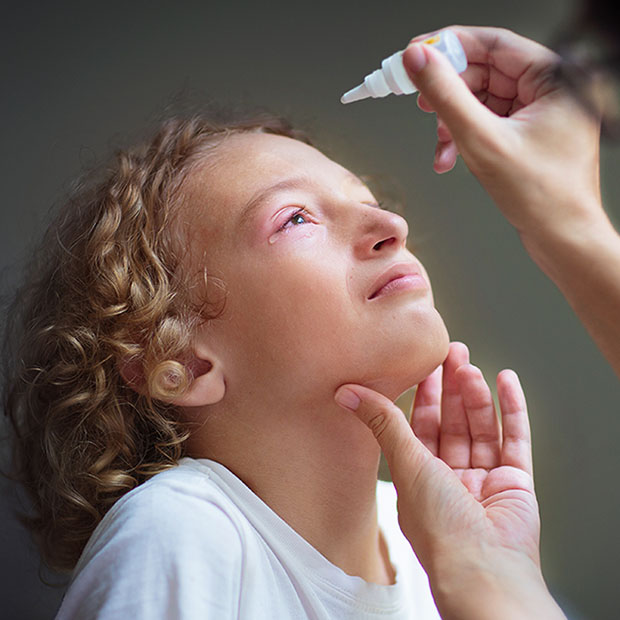Protect Your Eyes From Pink Eye

Many of us have gotten or will get some form of pink eye.
Pink eye, or conjunctivitis, is a prevalent eye condition marked by red, irritated eyes paired with discomfort and discharge, ranging from clear to thick and yellow. This infection involves the inflammation of the conjunctiva — the delicate membrane covering the eye and inner eyelids. Fortunately, it’s straightforward to both prevent and manage. Let’s explore the various forms and triggers of pink eye.
Bacterial Vs. Viral Conjunctivitis
Conjunctivitis may be either bacterial or viral, each highly contagious but with distinct symptoms and treatments. Bacterial conjunctivitis is identified by its heavy, greenish-yellow discharge and typically begins in one eye before spreading to the other. Transmission occurs through direct contact, but symptoms can be rapidly alleviated with prescribed antibiotics.
In contrast, viral conjunctivitis is characterized by a watery discharge and tends to persist longer than its bacterial counterpart. Since antibiotics are ineffective against viruses, treatment focuses on alleviating symptoms with warm compresses to reduce swelling and irritation. While it generally resolves on its own, viral conjunctivitis is exceedingly contagious, spreading easily through the air via coughs and sneezes.
Could It Be Allergies?
Allergies are another common cause of eye inflammation. If allergens are making your eyes red and itchy, taking allergy medications or steering clear of known triggers can help. Contact lens wearers should be aware of Giant Papillary Conjunctivitis, a specific allergic reaction that can arise from an allergy to lens cleaning solutions or from not cleaning and replacing lenses as recommended. To prevent this type of pink eye, it’s crucial to adhere strictly to your contact lenses’ care and cleaning guidelines.
Exposure to Chemicals
Exposure to harsh chemicals can also lead to symptoms of pink eye. This might occur from environmental pollutants or even chlorine in swimming pools. The most effective immediate response is to rinse your eyes with cool, clean water for several minutes. This action typically removes the chemical irritant. However, if symptoms persist after rinsing, it is important to seek medical attention promptly.
Guidelines for Prevention
Though conjunctivitis is highly treatable and typically short-lived, it’s best to prevent it whenever possible. Here are several strategies to reduce your risk of contracting pink eye:
- Frequently wash your hands with soap and water.
- Direct sneezes and coughs into your elbow rather than your hands.
- Avoid touching or rubbing your eyes.
- Never share contact lens solutions, contact lenses, or eye makeup.
- Strictly adhere to all contact lens care instructions.
- Remove contact lenses before swimming.
Need Help with Pink Eye?
If you or a family member is experiencing symptoms of pink eye, or if you have any concerns about this condition, please contact us. We’re here to help you schedule a consultation, diagnose the issue, and recommend appropriate treatment if needed.
